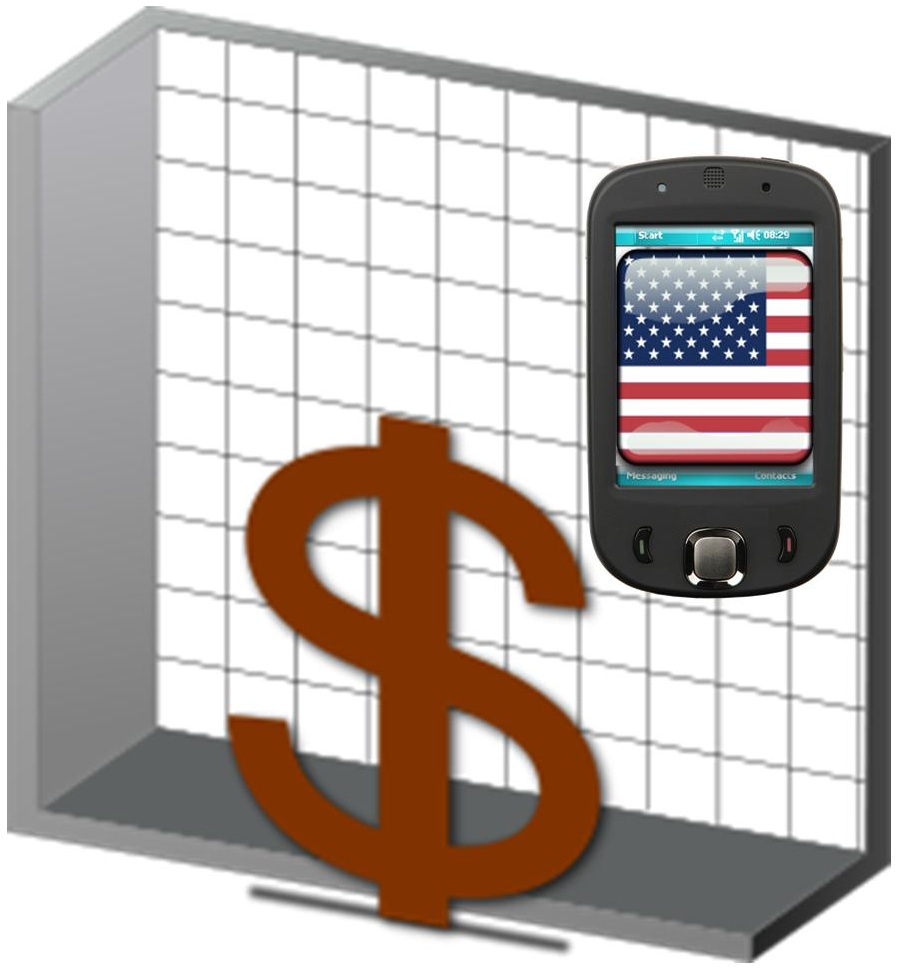Moreover, the prices in the United States are going up, even though they’re dropping around the world.
According to the 2014 International Market Communications Report, the latest mobile trends show that people in the United States are paying more for their wireless service than any other country studied within this report.
What’s more, unlike the majority of other countries that were examined, the prices are only going up.
The report was issued by as UK regulator – the Office of Communications, also called Ofcom – in order to examine mobile trends such as the prices being paid by subscribers in 18 total countries around the world. The analysis measured the average revenue on a monthly basis per mobile connection. The 18 countries spanned six different continents. What the report showed was that in 2013 in the United States, the average mobile customer paid approximately $47 per connection.
That amount was higher than the amount paid by customers in any other country studied by the mobile trends report.
 Customers in Japan were the only ones who paid anywhere near that amount, last year. The majority of the countries surveyed in the report saw a monthly bill that was lower than $31 for their wireless services. Mobile subscribers in Poland, Brazil, Russia, China, India, and Nigeria all paid an average monthly bill that was less than $16.
Customers in Japan were the only ones who paid anywhere near that amount, last year. The majority of the countries surveyed in the report saw a monthly bill that was lower than $31 for their wireless services. Mobile subscribers in Poland, Brazil, Russia, China, India, and Nigeria all paid an average monthly bill that was less than $16.
Among the reasons that helped to explain why customers in the United States were paying more for their monthly mobile service than anyone else was that they were also among the highest data users when compared to other nations. Cisco data has revealed that the average mobile consumer in the U.S. used an average of 1.3 GB of data every month, last year. Comparatively, Europeans were using an average of 700 MB per month, last year. This represented under half of the usage by Americans. African and Middle Eastern customers were using an average of only 185 MB per month during 2013.
That said, while higher data usage helps to shed some light on why the mobile trends are for higher prices in the United States, what wasn’t explained was why the U.S. was among the few countries where the cost of mobile service was not falling.
BWild |
November 26, 2014
According to the results of a recent survey, this environment is not yet prepared to take on wearables.
The ISACA global IT association has now released the results of recent research that it conducted with regards to the use of wearable technology by North American workplaces and has determined that they are not yet ready for this tech.
While headlines are continuously filled with new tech releases in this category, the workplace isn’t set to take it on.
Wearable technology is now already available in the form of smartwatches, smart glasses, smart jewelry, smart clothing, and a vast range of other devices, with virtually every large tech player having an offering on the shelf, ready to launch, or in the works. In some other countries, certain forms of these wearables have already become quite commonplace in the workplace. A recent study in India by Kronos showed that 82 percent of workers were either already using the devices or would feel comfortable doing so.
However, as wearable technology continues to flood the consumer market, the N.A. workplace isn’t ready yet.
 The concern is that if these wearables do actually become as popular as their manufacturers would hope, then they will be added to the workplace environment whether or not businesses are actually ready to deal with them. As has been the case with increasingly commonplace BYOD (bring your own device) programs and policies, it has been suggested that companies are going to have to start to think about what would be involved in BYOW (bring your own wearables) programs, as well.
The concern is that if these wearables do actually become as popular as their manufacturers would hope, then they will be added to the workplace environment whether or not businesses are actually ready to deal with them. As has been the case with increasingly commonplace BYOD (bring your own device) programs and policies, it has been suggested that companies are going to have to start to think about what would be involved in BYOW (bring your own wearables) programs, as well.
There is a great deal to consider when it comes to the entry of wearable devices into the workplace, as there will be network and security issues causing concerns, and other issues that step above and beyond what has already been seen as workers bring smartphones and tablets to work – simply because of the nature of wearables.
That said, the ISACA international vice president, Rob Clyde, who is also the CEO of Adaptive Computing, released a statement about wearable technology, saying that “The Internet of Things is here, and following the holidays, we are likely to see a surge in wearable devices in the workplace.”
 Customers in Japan were the only ones who paid anywhere near that amount, last year. The majority of the countries surveyed in the report saw a monthly bill that was lower than $31 for their wireless services. Mobile subscribers in Poland, Brazil, Russia, China, India, and Nigeria all paid an average monthly bill that was less than $16.
Customers in Japan were the only ones who paid anywhere near that amount, last year. The majority of the countries surveyed in the report saw a monthly bill that was lower than $31 for their wireless services. Mobile subscribers in Poland, Brazil, Russia, China, India, and Nigeria all paid an average monthly bill that was less than $16.
 The concern is that if these wearables do actually become as popular as their manufacturers would hope, then they will be added to the workplace environment whether or not businesses are actually ready to deal with them. As has been the case with increasingly commonplace BYOD (bring your own device) programs and policies, it has been suggested that companies are going to have to start to think about what would be involved in BYOW (bring your own wearables) programs, as well.
The concern is that if these wearables do actually become as popular as their manufacturers would hope, then they will be added to the workplace environment whether or not businesses are actually ready to deal with them. As has been the case with increasingly commonplace BYOD (bring your own device) programs and policies, it has been suggested that companies are going to have to start to think about what would be involved in BYOW (bring your own wearables) programs, as well.